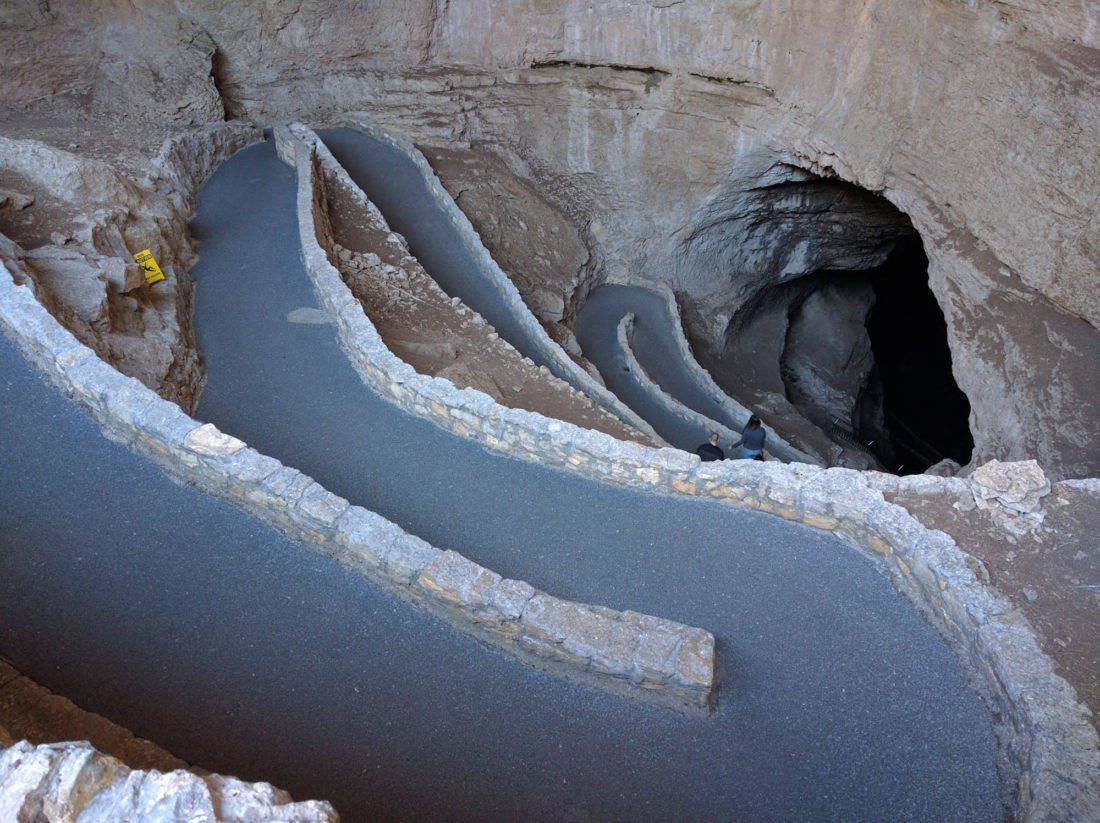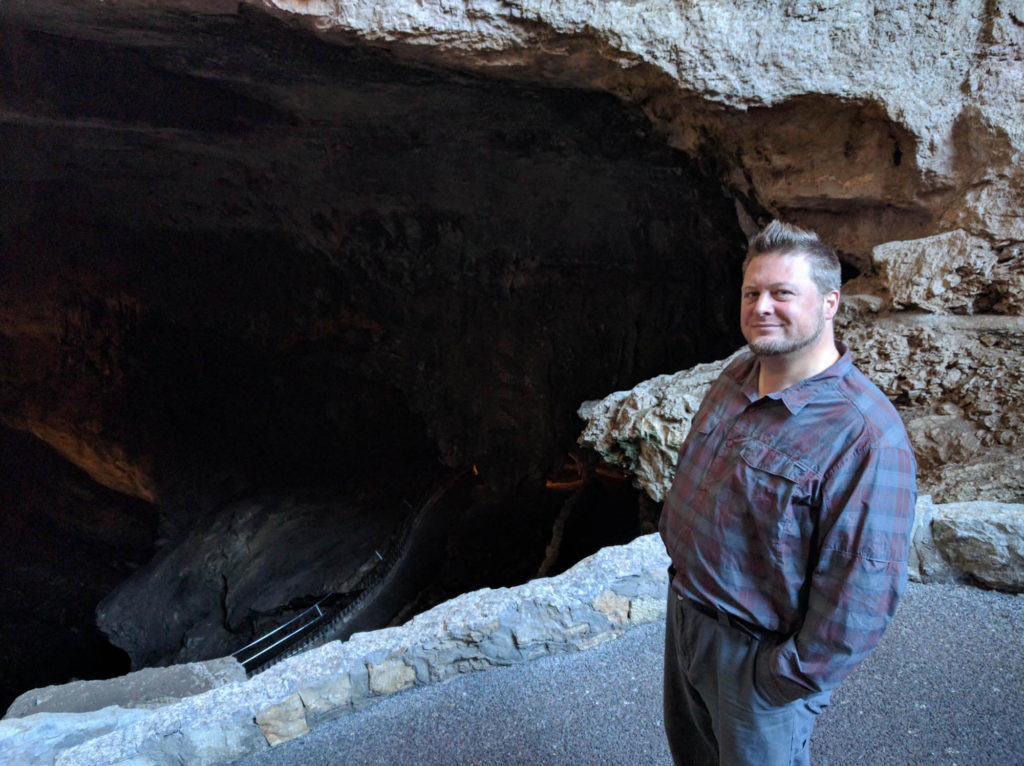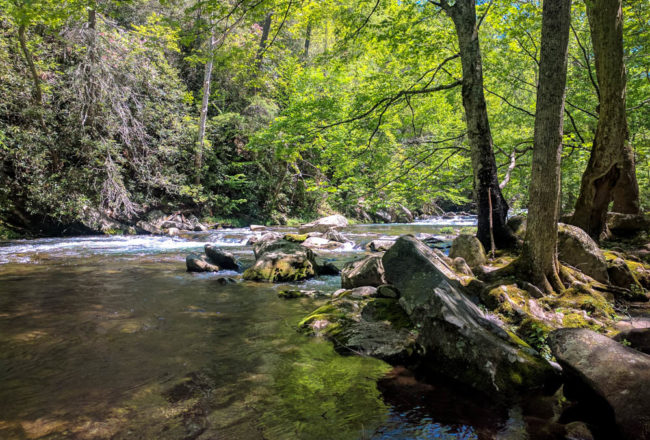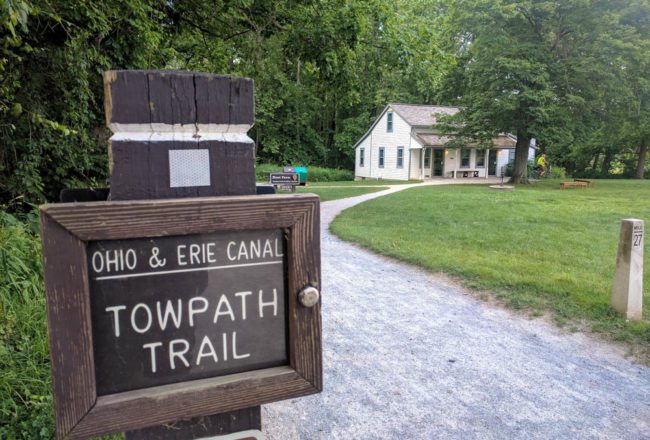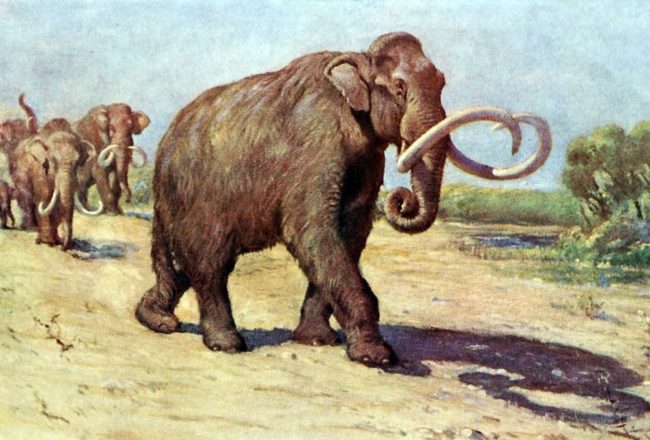Ancient Inland Sea
Like many natural geological formations of Southwest America, Carlsbad Cavern’s story starts over 280 million years ago, during a time known as the Permian age. Back then, a primary landmass called Pangea was surrounded by a global ocean called Panthalassa. In the land area which we now know as New Mexico, there was a shallow inland sea, home to a reef rich with aquatic life. The reef wasn’t like modern reefs; this reef was made mostly of sponges and algae. Today’s geologists call that ancient reef Capitan Reef, and it sheltered many now-long-gone animals such as ammonites, crinoids, snails, nautiloids, bivalves, and brachiopods.

Fossils from the Permian Age
The Making of a Mountain
Fast forward nearly 30 million years — after billions of sea critters die and collect on the sea floor, after millions of sediment layers coat the sea bottom, and after a few hundred major land shifts drastically altered the landscape — the coastline ultimately uplifted into a horseshoe-shaped limestone layer of rock a few thousands of feet thick, a few miles wide and over four hundred miles long. During this Triassic Age, it took 20 million years for the Capitan Reef to be covered by thousands of feet of additional sediments, and then (with the help of tectonic plates colliding) rise upward even further to form the Guadalupe Mountains. Water in the form of rain and snowmelt eroded the younger sediments and exposed a limestone ancient reef from the Permian Age.
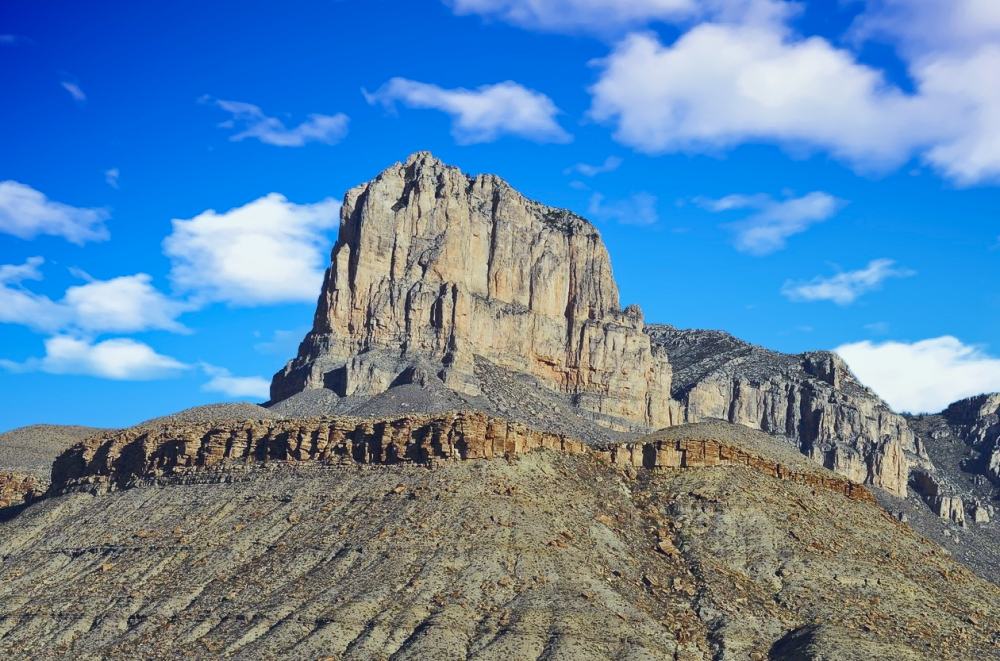
El Capitan – Most western part of Capitan Reef
Birth of a Cave
Roughly 6 million years ago, one of the last caves in the Guadalupe Mountains was formed: the Carlsbad Caverns. The caverns in Carlsbad are unique in that there is evidence that sulfuric acid eroded out the limestone, instead of the usual carbonic acid. Scientists discovered that sometime during the late Tertiary period (12 million years ago), hydrogen sulfide (H2S, gas) from oil deposits began diffusing upward and then combined with oxygen within the underground water table found within the limestone cracks and faults to form sulfuric acid, a very aggressive acid. As the Guadalupe Mountains shifted upward, the water level dropped in relation to the land surface. This drained the acid bath away, leaving behind the newly dissolved caves, a process that took roughly 4 to 6 million years.
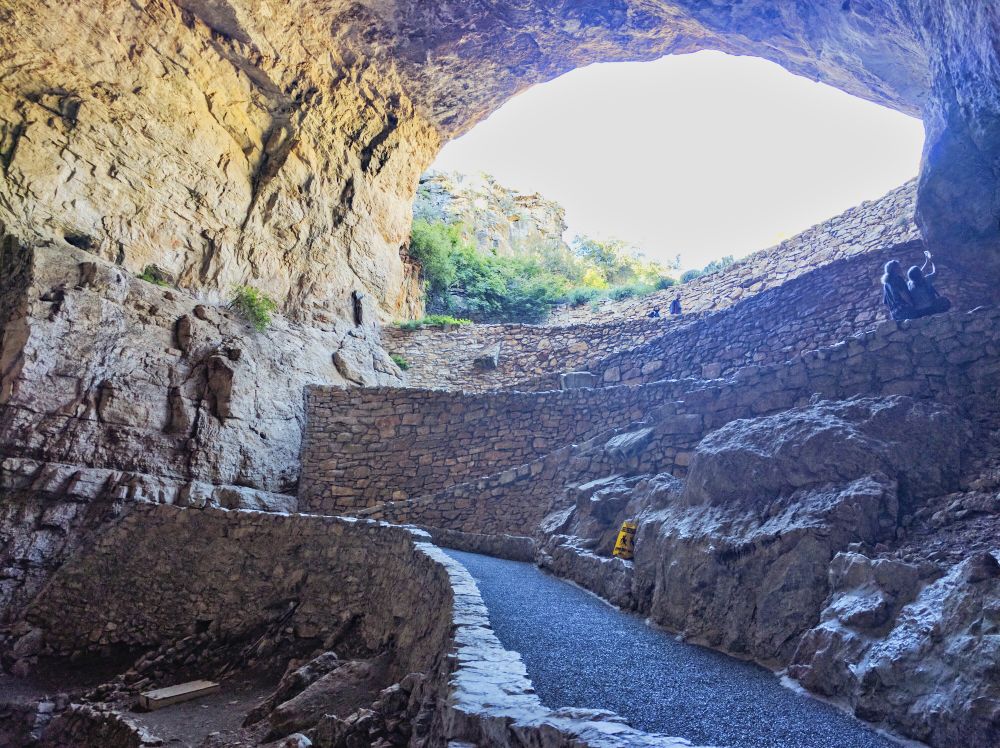
Looking out of the Cave Entrance of Carlsbad Caverns
Cave Decorations
About 2 to 3 million years ago, a collapse at the top of the cave created a natural entrance to Carlsbad Caverns. For the first time, a world of darkness and hidden passageways was open to the above world. Air began to circulate and flow through the caverns. Once Carlsbad became a breathing cave, magnificent cave decorations began to form. Rain and snowmelt soaked through the limestone, then down into the cave, drip by drip. On the way down, the water absorbed all kinds of minerals and even gasses. With the air now circulating through, the water could evaporate, and release carbon dioxide and leave behind minute deposits of calcite.
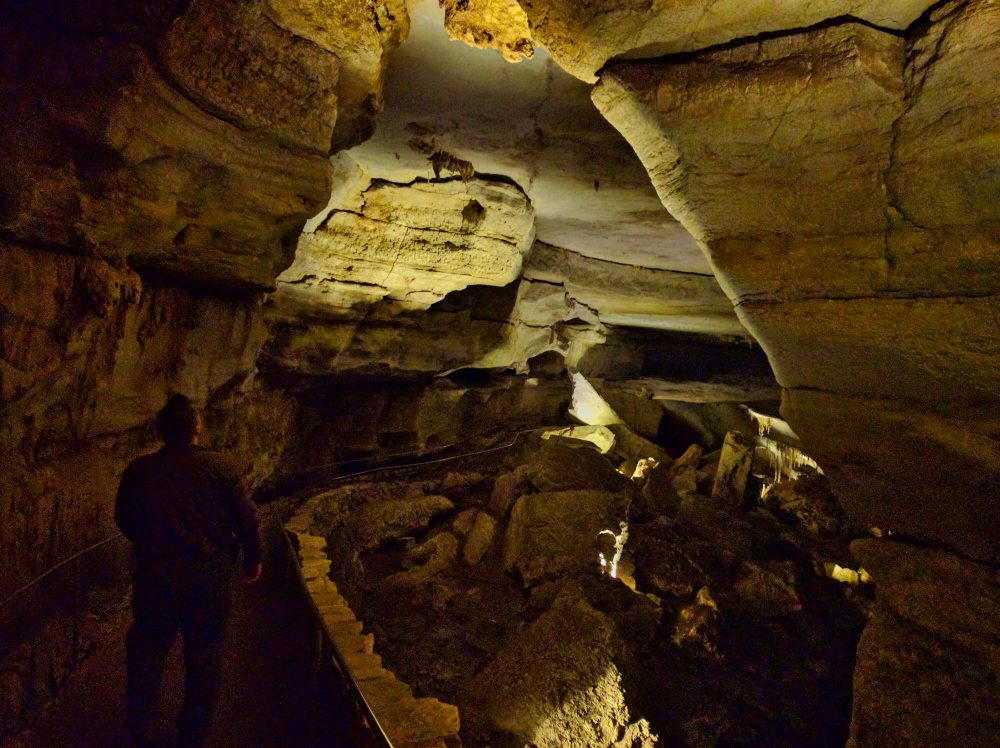
Path down from the Main Hall
Speleothems of all different shapes can be found in Carlsbad. Slow drops form stalactites, soda straws, ribbons, curtains, and draperies. Faster moving water forms decorations on the floor such as flowstones, columns, stalagmites, shelves, cave pools, and rimstone dams. Through evaporation, you get cave popcorn, with capillary forces, gravity-defying helictite forms, and nucleation creates beautiful crystals such as dogtooth spar, anthodites, and frostwork. The amazing part is that many of these speleothems would have formed up during the last Ice Age. Imagine 10,000 years ago, while saber-tooth cats, giant sloths, and mammoths roamed the surface, all the amazing formations you see today were formed deep underground – when the Guadalupe Mountains received a great deal more rainfall than in today’s desert climate.
Natural Entrance Self-Guided Tour
When we first arrived at Carlsbad Caverns, I was determined that we start from the Natural Entrance and making the full descent, instead of taking the lazy way down in the elevator. There’s an option to get an audio guide device, but we skip that and head directly to the route. I want to walk the 1.25-mile path and see the cave as the original explorers did, with eyes of curiosity searching out for new discoveries. We first began at the amphitheater, where visitors can watch the bats fly out into the night by the millions.
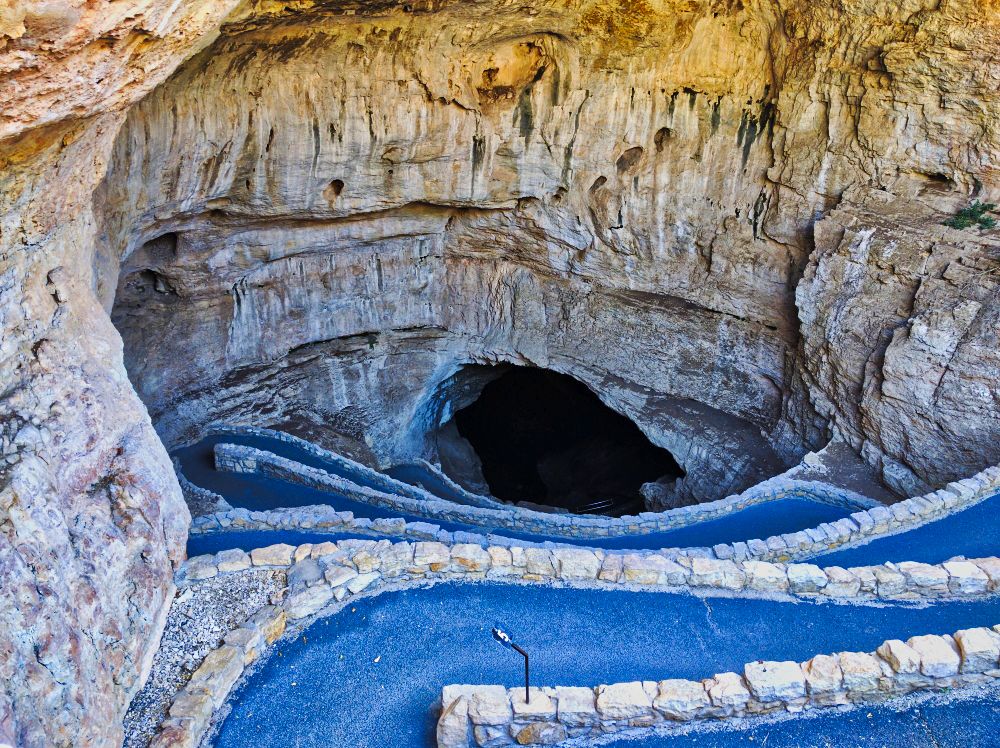
Natural Entrance of Carlsbad Caverns
Into the Twilight Zone
Slowly we descended into the dark and bid the daylight farewell. The path took us down a steep and narrow trail bathed in the perpetual dusk, a place known as the “Twilight Zone” by the rangers who work here. Many of the cave formations deeper in were lit by LED lights put in just a few years ago. Without the lights, we wouldn’t be able to see a surprisingly tall cavern ceiling looming above us, nor the stone formations flowing and jutting in odd shapes. Looking back daylight streams through the entrance. Little did I know that this would be my last glimpse fo the sun for many hours. From here on out the communication between Hitch and I is reduced to short bursts of exclamations containing no more than three syllables and sighs of wonder. Nothing but, “Wow!” or “Woah!” or “Amazing!” and the occasional “Look at this!”
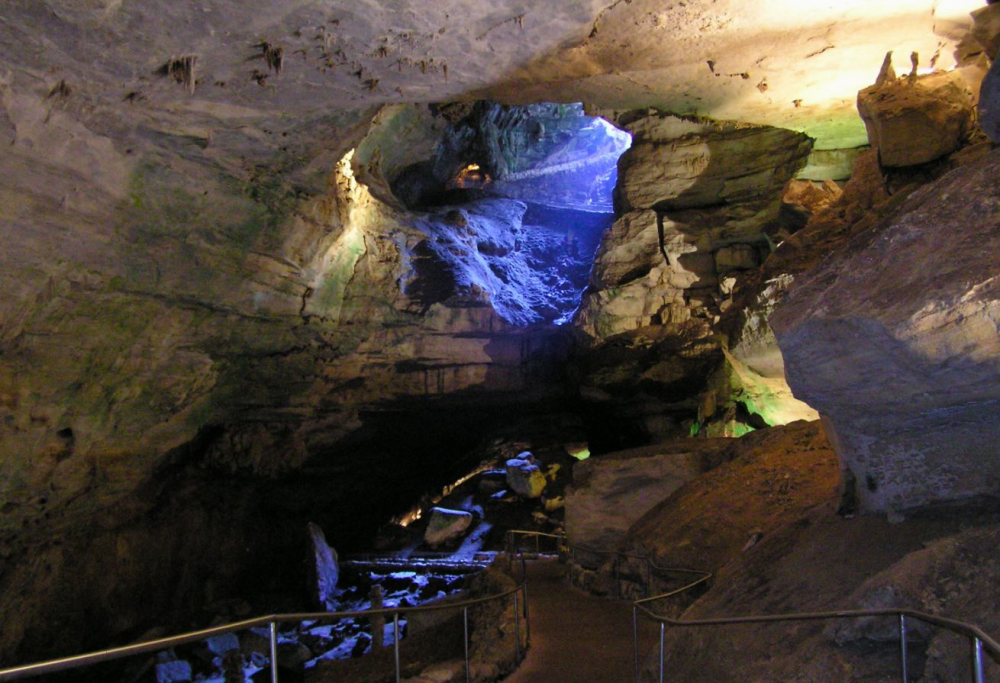
Along the Natural Entrance Trail, in the Twilight Zone
Mysteries of Devil’s Den
On we wandered through a tight tunnel, only to be surprised by tall and spacious trunk passage of the Main Corridor. Here we passed by several named formations: Devil’s Spring, Taffy Hill, and the Whale’s Mouth before heading into an adjoining cavern known as the Devil’s Den. In this eerie cavern, Geologist Carol Hill and her team excavated the remains of a giant ice age sloth. Known as the Shasta ground sloth, this megafauna reached 9-feet long and weighed a quarter of a ton. According to Hill, the sloth was probably injured when it fell down into the cave. Ultimately, the sloth laid down to die in a pit beneath Devil’s Den.
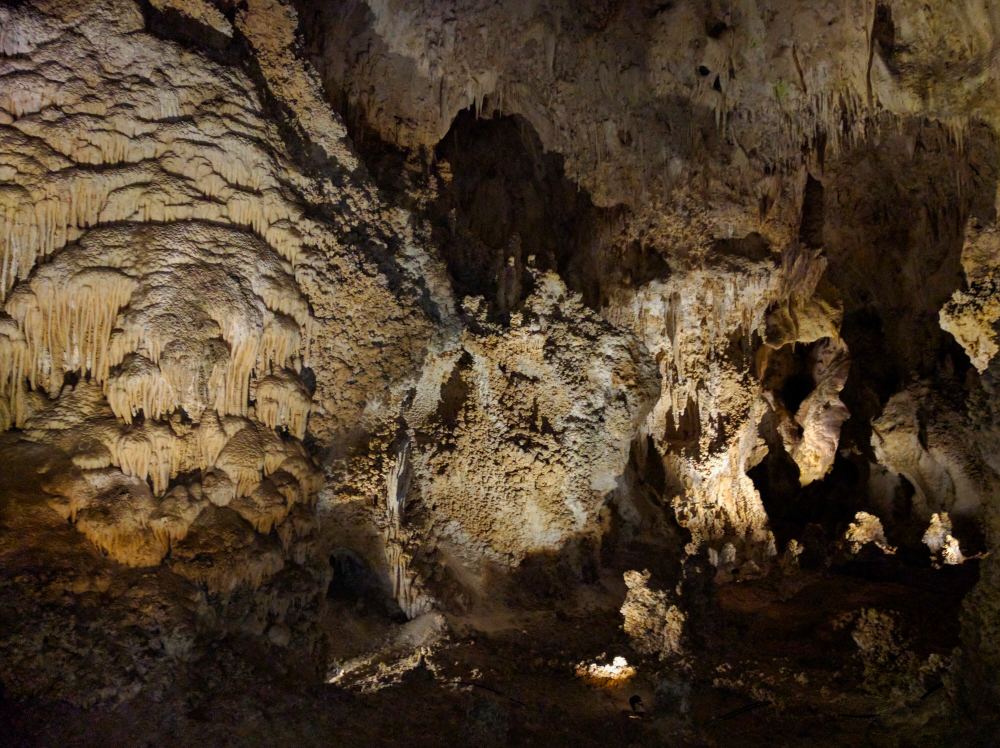
Carlsbad Caverns Popcorn Formations
Beyond the Devil’s Den, the path begins to snake and curve downward. We pass a set of magnificent narrow stalagmite formations, known as totem poles. This particular set of totem poles is called the Witch’s Fingers, due to their crooked and knobby nature. At the foot of a 30-foot totem pole near the trail, is where I begin to wonder who named all of these formations, and why did they have this odd fixation on devils and witches. I later learned from a ranger that a 1800s Carlsbad-area cowboy by the name of Jim White named most rooms and formations. I couldn’t imagine roaming this rocky terrain with only an oil lantern, I’d probably break my neck in first five yards.
Iceberg Rock
The trail then takes us down to Iceberg Rock. This 200,000-ton behemoth fell from the cavern wall. From the top of the trail, we can see the white tip, while at the bottom the trail brings us right next to it. We turn the bend and end up in a passage beneath the giant for a good look at its underside. Before we know it, we clear the passage and end up in a hallway that looks to be made from the bone of some long gone monstrous creature. Before I can say anything, Hitch points out a sign indicating that this area is called “The Bone Yard.”
We scale a small hill before heading down to a junction point where the Natural Entrance Trail joins the Big Room Trail. The sheer size of the Big Room stunned us both. Although I can only see halfway, the signs indicate that the room is 4,000 feet long and 625 feet – a very Big Room!
I’m afraid I have to end this blog article here and save the details of our Big Room exploration. There’s just too much for me to talk about to put in one post. I remember thinking, when we reached that junction, “Wow, there’s more?” Yes, lots more, but in a later article. So stay tuned!
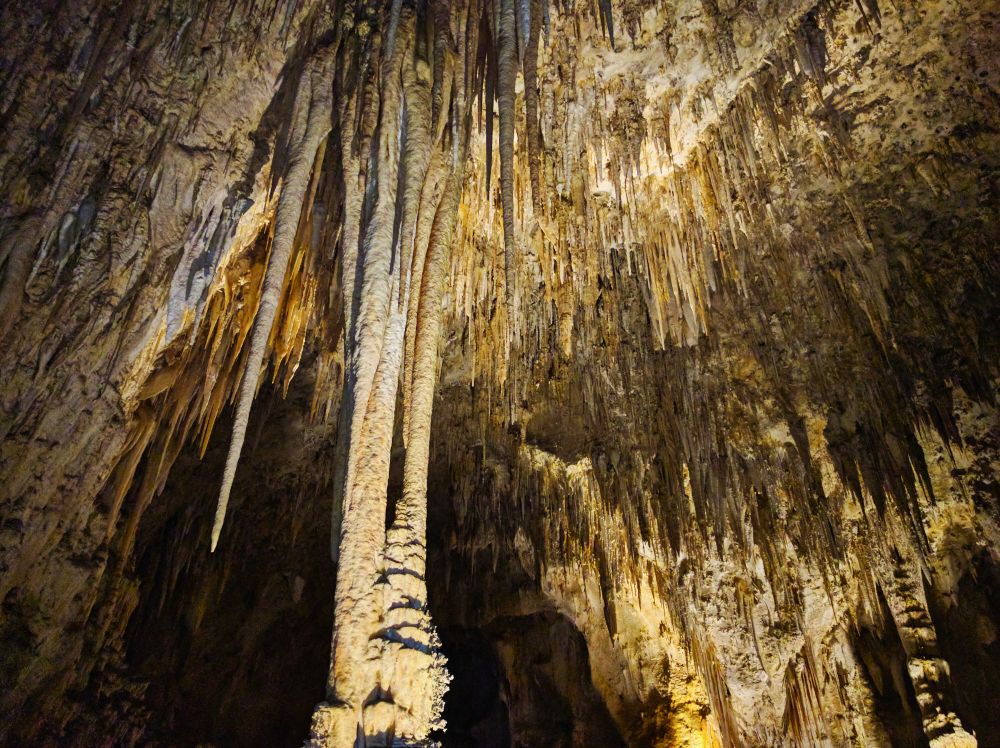
Columns and Soda Straws
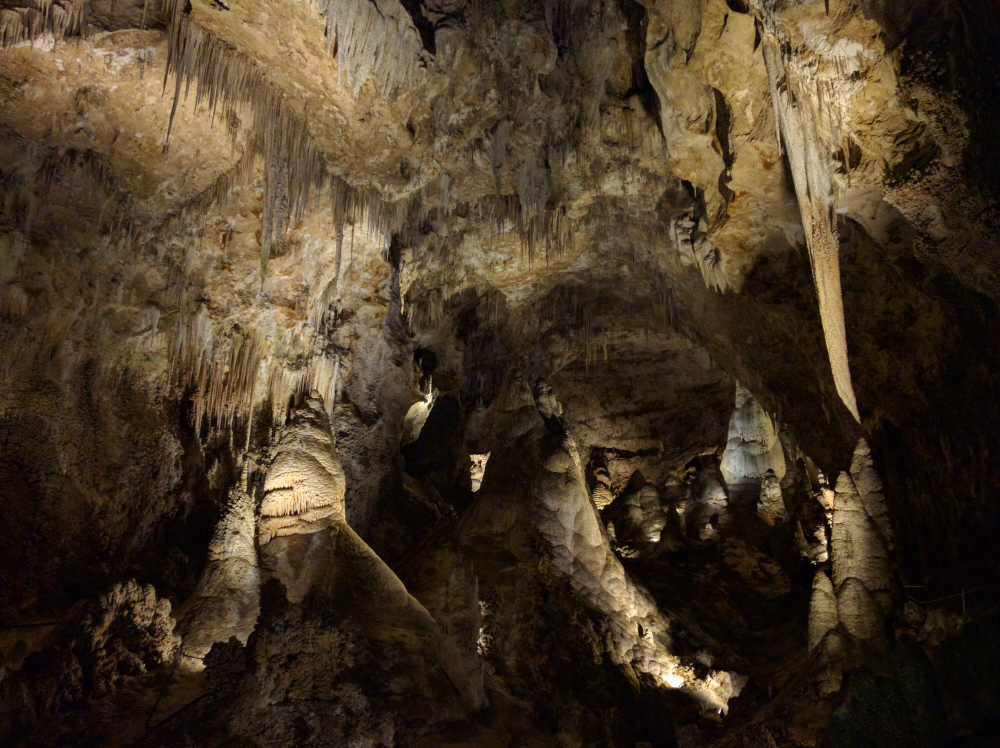
Just within the Big Room in Carlsbad Caverns
